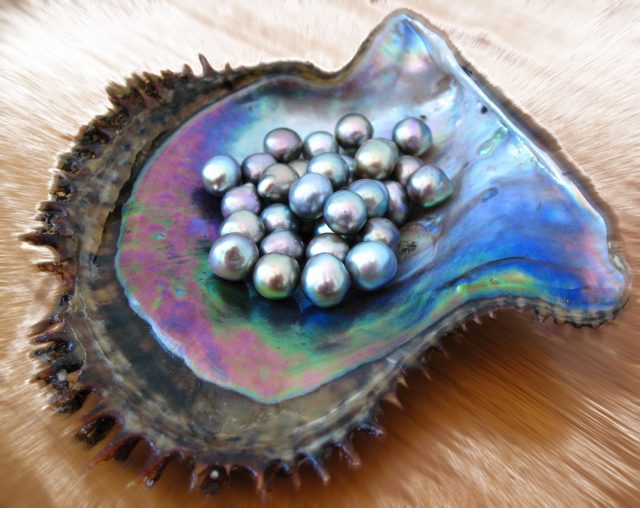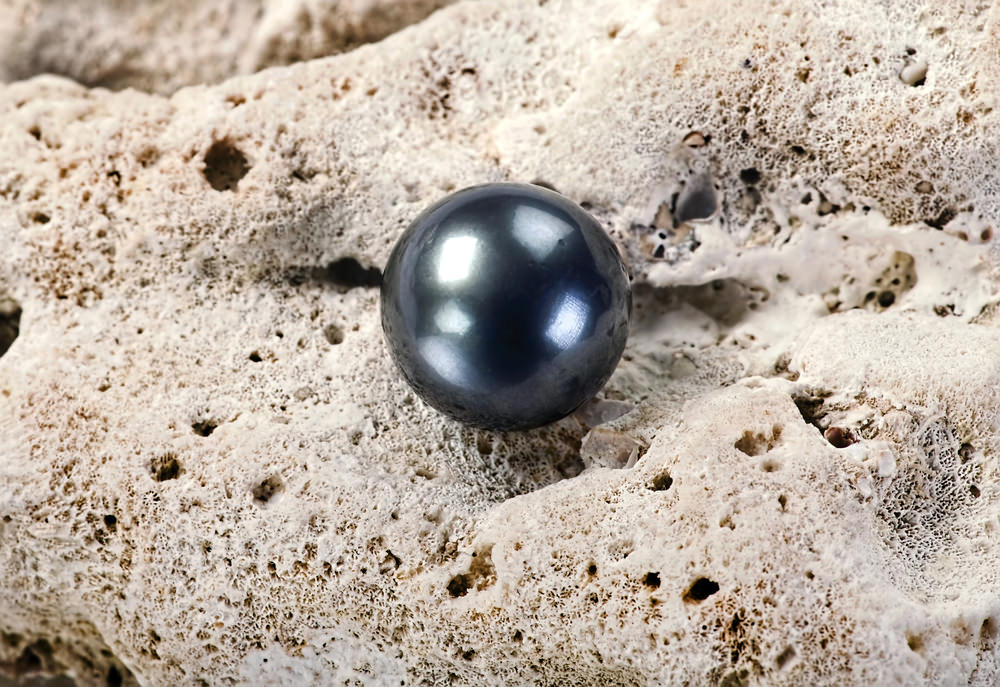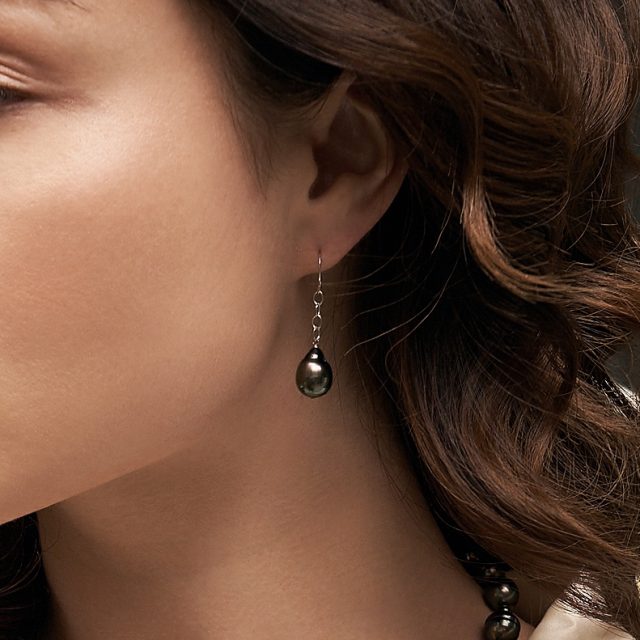Pearl luster refers to the quality and intensity of light reflected from a pearl’s surface, crucial in defining the pearl’s beauty and value. The luster of a pearl is a result of its unique structure and nacre thickness, contributing to its iridescence and overall appeal.
Tahitian pearls, cultivated in Tahitian pearl farms and harvested from the Pinctada margaritifera oyster in French Polynesia, are revered worldwide for their thick nacre layers, resulting in high luster and making them highly coveted in jewelry markets. The intensity and depth of the light reflected by Tahitian pearls are unmatched, often exhibiting a mirror-like quality.
Luster directly correlates to a pearl’s quality. Pearls with high luster are brighter, more reflective, and consequently, more valuable. High luster suggests the pearl has been in the oyster for an extended period, allowing for the formation of numerous nacre layers.

Luster is one of the primary factors determining a pearl’s value. High-luster pearls are more desirable and consequently fetch higher prices in the market. It reflects the pearl’s quality, indicating healthy growth conditions and adequate cultivation time.
Jewelers assess pearl luster by observing the clarity and sharpness of reflections on the pearl surface. The sharper and more distinct the reflections, the higher the luster, and thus the pearl’s value.
Pearls with excellent luster have sharp, distinct, and mirror-like reflections, appearing exceptionally bright and shiny. These pearls command the highest prices due to their high quality and rarity.
Pearls with good luster exhibit clear reflections, though they may lack the mirror-like quality of higher-grade pearls. Their value is significantly higher than those with poor or fair luster.
Fair luster pearls have some reflectivity but lack the sharpness and clarity seen in higher-grade pearls. Their value is generally moderate.
Pearls with poor luster have a dull and chalky appearance, with minimal to no reflections visible. These pearls have lower value due to their lack of vibrancy and appeal.

In addition to their beauty, this variety of pearl also has a unique character of color play that takes place on or beneath the nacre‘s surface. This phenomenon is popularly known as the pearl’s orient. As you move a pearl in your hand it’s orient becomes apparent. Not all pearls have this phenomenon. Only the thick pearls have an orient.

Step into a world of elegance with Tahitian Pearl Earrings. Each piece is crafted with nature’s finest pearls, chosen for their captivating hues and distinctive allure. Elevate your style with our range of classic and modern designs, or gift a touch of iridescence to someone special. Discover the perfect blend of sophistication and natural beauty – explore our Tahitian Pearl Earrings collection now.
To maintain their luster, Tahitian pearls should be stored separately from other jewelry to avoid scratches. They should also be cleaned with a soft cloth after wearing to remove any residue that may dull their surface. It’s also advisable to avoid direct contact with chemicals, including perfume and makeup, as these can damage the nacre.
Tahitian pearls’ high luster is a defining characteristic that sets them apart from other pearls. It’s a key determinant of their value, making them a coveted gem in the jewelry industry. Recognizing the connection between luster and value can be invaluable when shopping for pearl jewelry. Maintaining the luster of your Tahitian pearls will ensure their beauty endures, allowing you to enjoy their radiance for many years to come.
Luster, in the context of pearls, refers to the quality and intensity of light reflected from the pearl’s surface. Tahitian pearls, known for their thick nacre layers, are particularly revered for their high luster, displaying an unmatched intensity and depth of light reflection.
The luster of a Tahitian pearl is a key determinant of its value. Pearls with high luster, reflecting light brightly and clearly, are typically of higher quality and thus more valuable. This is because high luster suggests a thicker layer of nacre, indicating that the pearl has been in the oyster for an extended period.
Tahitian pearls are categorized into four luster categories: poor, fair, good, and excellent. Poor luster pearls have a dull appearance, while fair luster pearls have some reflectivity but lack sharpness. Good luster pearls exhibit clear reflections, and excellent luster pearls have sharp, distinct, and mirror-like reflections, making them the most valuable.
Tahitian pearls used to be the rarest, most valuable cultured pearls available in the world. These days, Tahitian pearls are still more valuable than Freshwater and Akoya pearls, but generally not as valuable as the South Sea variety.
AAA Dark pearls are some of the darkest Tahitian pearl color you will find – a hue as close to black as possible. Tahitian Pearls come in a gorgeous range of colors, including iridescent peacock (blue-green), silver, bronze and more.
The Tooth Test is the most accessible and reliable way to tell if Tahitian pearls are real. Simply lightly rub the pearl against the front of your tooth while avoiding the edge. If natural or cultured and not faux, the pearl will feel somewhat gritty. By comparison, simulated pearls will feel smooth

There’s nothing quite like a pair of Tahitian Pearl Earrings. Mysterious, seductive, unique – all while encompassing the timeless charm of the ocean. Shop our gorgeous collection of Tahitian Pearl Earrings and add irresistible dazzle to any outfit in your wardrobe.
Signup now and receive an email once I publish new content.